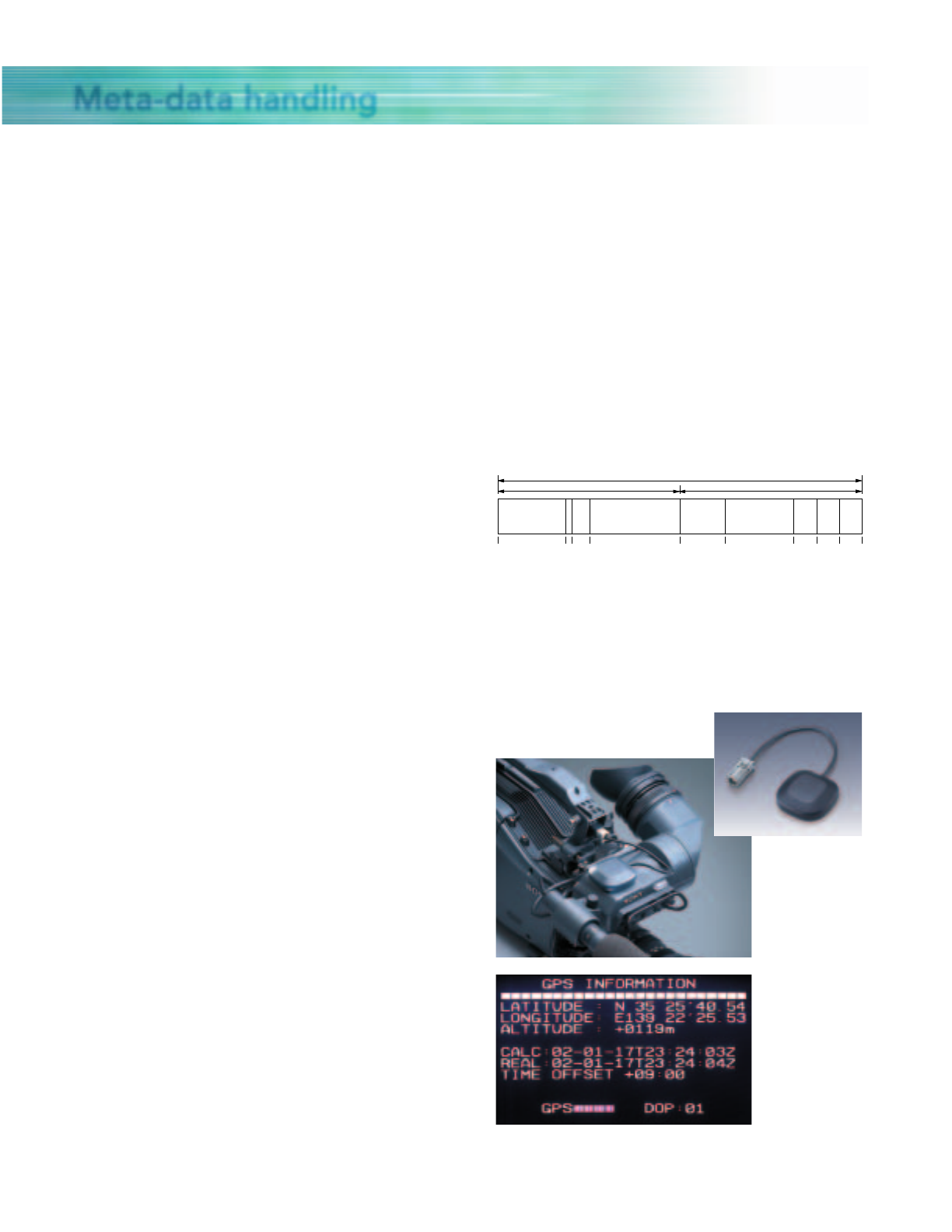
Multi-matrix function
Unlike conventional color correction or matrix control, the
Multi-matrix function allows color adjustments to be
applied over a color and/or hue range as specified by the
operator. The color spectrum is divided into 16 areas of
adjustment, where the hue and/or saturation of each area
can be adjusted. This provides interesting in-camera color
effects – similar to secondary color correction.
Triple Skin Tone Detail control
Skin Tone Detail allows control of image enhancement
within user specified color tones. The MSW-900 camcorder
allows enhancement to be set independently for up to
three distinct color and/or hue ranges.
The conventional use of Skin Tone Detail correction is to
reduce the image enhancement in areas of skin tone. With
the MSW-900, correction is not restricted to areas of skin
tones and can be set to apply to any three color areas.
Image enhancement within those three areas can be
increased or decreased relative to the overall image
enhancement of a given scene.
Electronic Soft Focus
The Electronic Soft Focus included in the camcorder
applies an effect similar to using an optical soft-focus
filter – but in a much more convenient way. Electronic Soft
Focus uses the detail signal to reduce, rather than
increase, the sharpness of the picture. By subtracting the
detail signal from the original signal (as opposed to adding
it as in conventional image enhancement), Electronic Soft
Focus is able to provide a picture that is “softer” than that
achieved when detail is switched off completely.
Electronic Soft Focus can be used in conjunction with Skin
Tone Detail to only change the sharpness within a specific
color or hue range.
Selectable gamma table
A selectable gamma table is provided to easily give a
specific look to a picture by selecting from several fixed
gamma patterns.
Auto Tracing White Balance
(
ATW
)
The MSW-900 offers an Auto Tracing White Balance (ATW)
function that automatically adjusts the camera’s color
temperature in real time with a change of the lighting.
This is especially useful when a shoot is performed across
different environments, such as from indoors to outdoors.
9
8
Multi-matrix ON
Color temperature control
In addition to the optical color filters, digital color
temperature control is available to give a ‘warmer’ or
‘colder’ look to the picture. Combined use of these two
color temperature control methods allows operators to
meet their creative needs.
TruEye
TM
processor
The Sony TruEye processor is one of the most innovative
features of Sony digital signal processing technology. This
technology makes it possible to virtually eliminate hue
distortion, particularly obvious in highlight conditions that
result from conventional RGB analog or digital processing.
By processing the video signal data at three levels –
brightness, hue and saturation – similar to how the human
eye works, the TruEye features assists in the reproduction
of natural skin tones.
Meta-data handling
UMID* recording
The UMID is a unique identifier for picture, audio and data
material that is created and globally unique. The MSW-900
automatically generates and records UMID on tape at
every scene change. By adding UMID information during
the acquisition process, future benefits such as easy search
of material during editing, and archive will be realized.
Sony supports UMID as well as Extended UMID** for
further operational convenience.
**UMID is standardized as SMPTE 330M.
**Extended UMID adds Signature meta-data, time, positioning, and
**user information to the Basic UMID.
GPS Unit
—
HKDW-704
Utilizing the meta-data capability of the MSW-900
camcorder, the HKDW-704 GPS unit has been introduced
to enhance the ability to store Global Position information
in association with the field recorded material.
The HKDW-704 offers real-time recording of global
positioning information on tape as well as the Memory
Stick storage medium. When the camcorder playbacks a
tape that has recorded GPS information, the positioning
information of the shooting site can be indicated on a PC
running map illustration software*. The position data is
also recorded as Extended UMID on the tape keeping the
link between video/audio and positioning data.
*Output format from the REMOTE connector is NMEA and software.
Since the early days of film and television, meta-data such as shot number, slate information
and other production notes has been used increasingly during the production process.
While much of this data has been generated and stored on paper, the use of computers for
storage and management of meta-data has grown significantly.
However the lack of a unique identifier for each segment of material recorded on the filed
tape has made it difficult to link this meta-data to the actual material.
The MSW-900 camcorder now solves this problem by providing the capability to generate
and record a globally unique identifier relating directly with the video material.
This process is made possible by recording UMID (Unique Material Identifier) information.
Creative versatility
Conventional Video Equipment
TruEye
Extended UMID (64 bytes)
Basic UMID (32 bytes)
Universal
Label
Material
Number
Inst
No.
Time/DateL
112 bytes 16 bytes 8 bytes 12 bytes 4
bytes
3
bytes
4
bytes
4
bytes
Spatial Co-ordinates
Country
Org User
Signature Metadata (32 bytes)
















